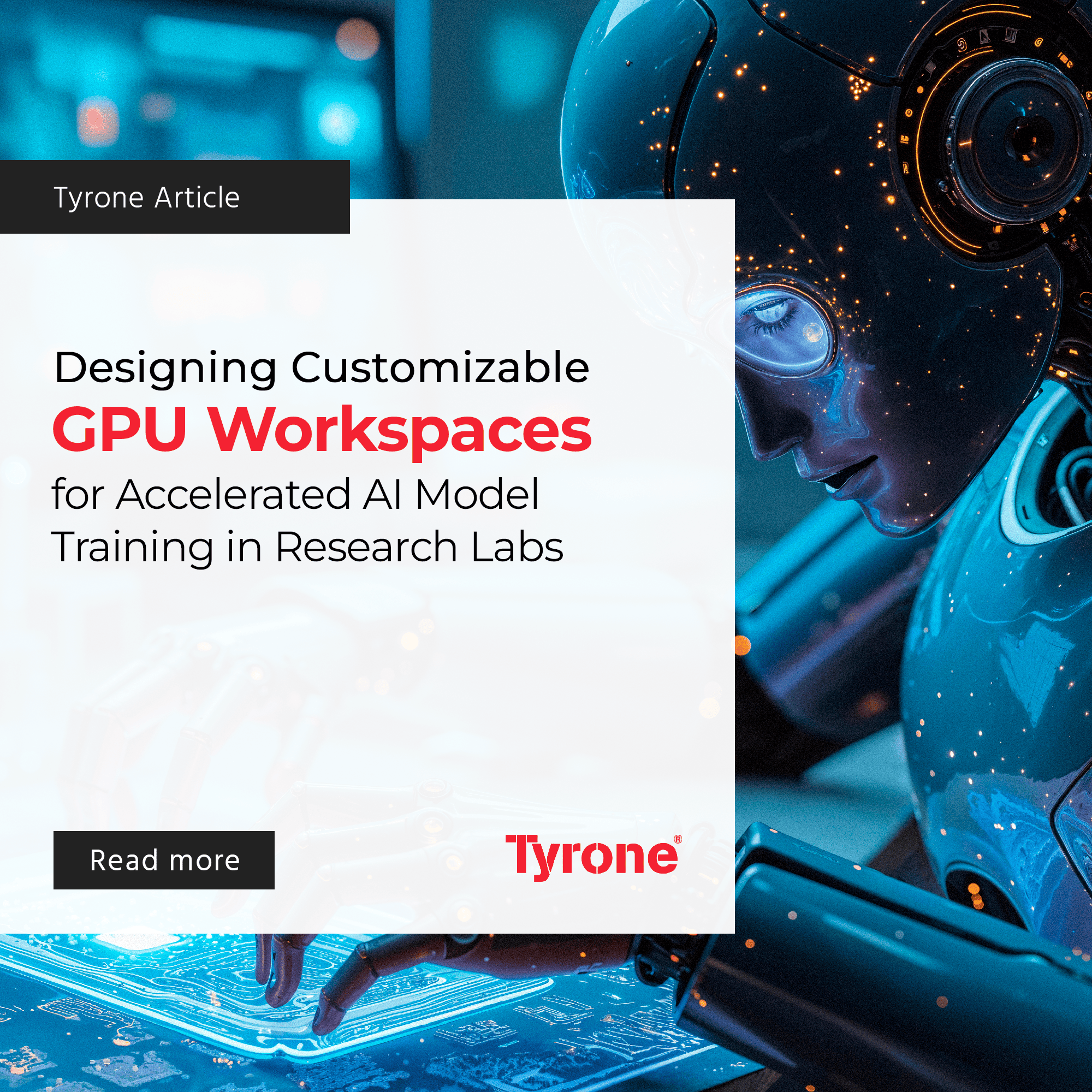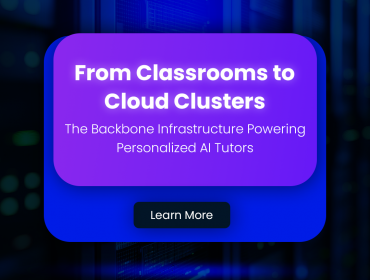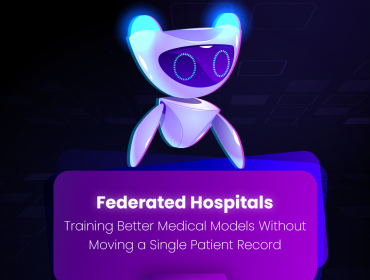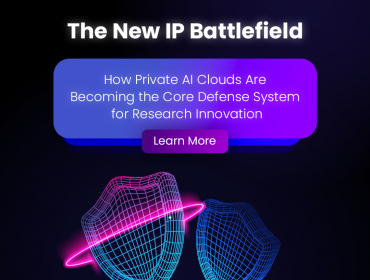In today’s rapidly evolving research landscape, traditional GPU infrastructures are struggling to meet the increasing demands of advanced AI model training. Research labs are facing growing challenges due to fixed resource allocations, long queue times, and rising data volumes. Customizable GPU workspaces offer a transformative solution by providing flexible, on-demand environments where computing, storage, and networking resources can be dynamically reconfigured. The global graphics processing unit (GPU) market is projected to reach USD 461.02 billion by 2032, with a compound annual growth rate (CAGR) of 28.6% during the forecast period (Source: Fortune Business Insights). This article explores the strategic value, design principles, and technical advantages of these agile infrastructures, empowering stakeholders to make informed, high-impact technology investments.
I. Strategic Imperative for Customization
Overcoming Traditional Bottlenecks
Traditional GPU infrastructures in research labs are often plagued by static resource assignments that lead to inefficient utilization. Fixed clusters mean that researchers may experience long wait times during high-demand periods, significantly delaying model development and iterative experimentation. In contrast, customizable GPU workspaces enable real-time resource reallocation, allowing labs to adapt instantly to shifting workloads. This agile approach not only minimizes process delays but also supports continuous experimental innovation—a critical factor for achieving breakthroughs in AI research.
Enhancing Operational Agility
Adopting a dynamic GPU infrastructure provides operational agility by aligning compute resources with the variable demands of different research projects. Rather than investing in a costly fixed pool of GPUs that may often remain underutilized, stakeholders can leverage a modular environment to channel resources where they are needed most. This flexibility directly translates into faster development cycles and a more responsive research operation, ensuring that labs can pivot quickly when new AI algorithms or datasets demand rapid experimentation.
Cost Efficiency and ROI
Beyond performance gains, customizable workspaces deliver significant economic benefits. With dynamic resource allocation, labs reduce capital expenditure on idle hardware while enhancing ROI. Cost efficiency is achieved by paying only for the compute power consumed during peak workloads—an ideal setup for research environments where computational needs can be unpredictable. These factors together create a compelling business case: stronger research outcomes, accelerated time-to-market for innovations, and a more strategic allocation of budgetary resources.

II. Core Design Principles of Customizable GPU Workspaces
Modularity and Disaggregation
Central to the customizable GPU workspace is a modular design that disaggregates the core components—compute, storage, and networking—into independent resources. This architectural shift allows research labs to build fluid resource pools that can be mixed and matched as necessary. Modular disaggregation breaks away from the rigid “one size fits all” model and ensures that when demand surges for complex AI tasks, labs can quickly generate the precise configuration needed without overhauling the entire system.
Dynamic Resource Allocation
At the heart of agile GPU infrastructures lies dynamic resource allocation. Modern orchestration frameworks—often powered by API-driven control planes—enable administrators to scale resources instantly based on real-time demand. Such dynamic scheduling is not mere optimization; it is a strategic enabler of performance.
Secure Multi-Tenancy and Isolation
For shared research environments where multiple projects may run concurrently, secure multi-tenancy is paramount. Customizable GPU workspaces implement robust isolation protocols that ensure segregated and secure environments for each project. By enforcing strict boundaries between different workloads, labs safeguard sensitive data and proprietary research findings while simultaneously maximizing overall resource utilization. This security layer is critical for multi-disciplinary research setups and fosters a collaborative yet protected environment.
III. Accelerating AI Model Training: Technical Advantages
Tailored Configurations for Diverse Workloads
Customizable GPU workspaces offer the flexibility to fine-tune configurations based on the specific requirements of each AI project. Whether a lab is dealing with deep neural networks, complex simulations, or massive data analytics, tailored workspaces allow for configuring heterogeneous GPU resources to match the task at hand. This customization ensures that complex models can fully exploit the capabilities of high-performance GPUs, reducing training cycles and accelerating the iteration process.
Enhanced Throughput and Resource Efficiency
Dynamic reallocation of resources in these workspaces not only minimizes downtimes but also significantly improves overall throughput. By curtailing idle GPU time and channeling processing power towards active tasks, research labs can run more experiments concurrently and glean insights at a much faster pace. Moreover, studies in the broader hardware market suggest that efficient resource orchestration plays a vital role in scaling AI research capabilities.
Scalability for Future AI Innovations
As AI models continue to grow in complexity and the volume of data expands, research labs must adopt infrastructures that are as flexible as they are powerful. Customizable GPU workspaces provide the scalability necessary to support surges in demand without substantial new capital investment. Lab administrators can swiftly reassign resources to emerging projects or experimental setups, enabling them to stay ahead in an era defined by rapid technological change. Scalability in this context does not merely support growth—it becomes an active component of strategic decision-making in research innovation.
IV. Implementation Considerations and Future Directions
Integrating with Existing Ecosystems
For stakeholders contemplating the transition to customizable GPU workspaces, integration with existing infrastructures is paramount. Adoption strategies should emphasize compatibility with prevalent orchestration tools, cloud management platforms, and legacy systems. A phased integration minimizes operational disruptions and accelerates the realization of performance and cost benefits. Thoughtful implementation planning is essential to ensure that the transition is seamless, both technically and organizationally.
Future-Proofing the Research Lab
Investing in agile GPU infrastructures is not a short-term fix—it is a forward-looking strategy that prepares research labs for the next frontier of AI developments. As hardware capabilities evolve and models become more data-intensive, the inherent flexibility of customizable workspaces positions labs for sustained innovation. This future-proofing strategy offers a competitive advantage by not only meeting current needs but also adapting to emerging trends in AI research and technology innovation.

Conclusion
Customizable GPU workspaces represent a paradigm shift for research labs striving to accelerate AI model training. By embracing modular design, dynamic resource allocation, and secure multi-tenancy, research facilities can overcome long-standing performance bottlenecks while dramatically enhancing operational efficiency and cost-effectiveness. For stakeholders, investing in customizable GPU workspaces is not merely an upgrade—it is a competitive imperative that drives both immediate operational benefits and long-term research innovation.










